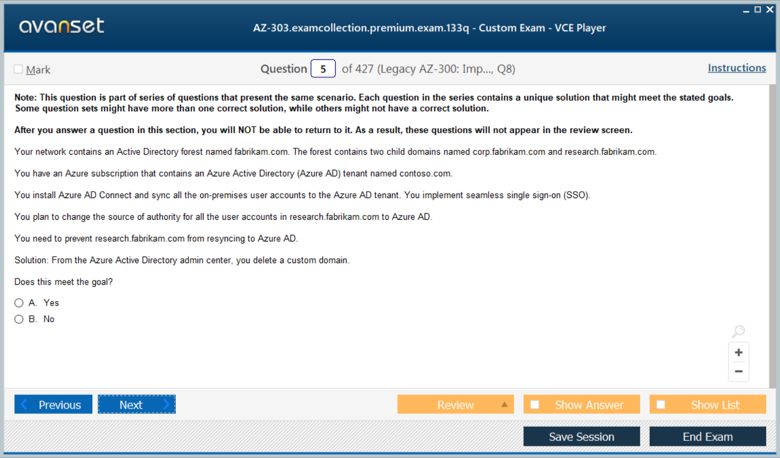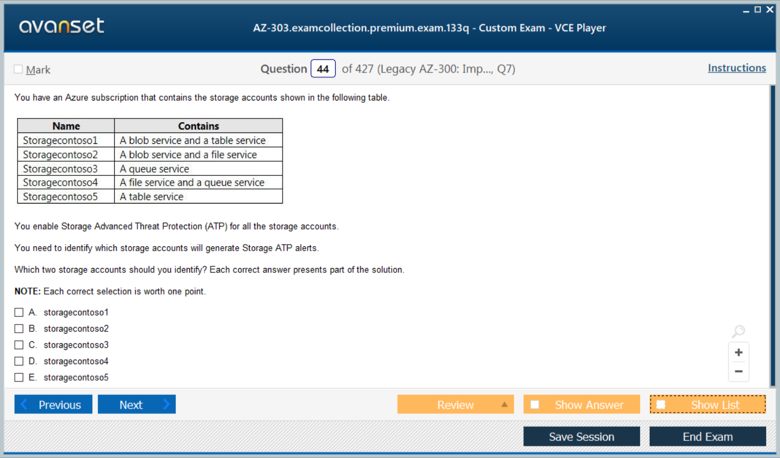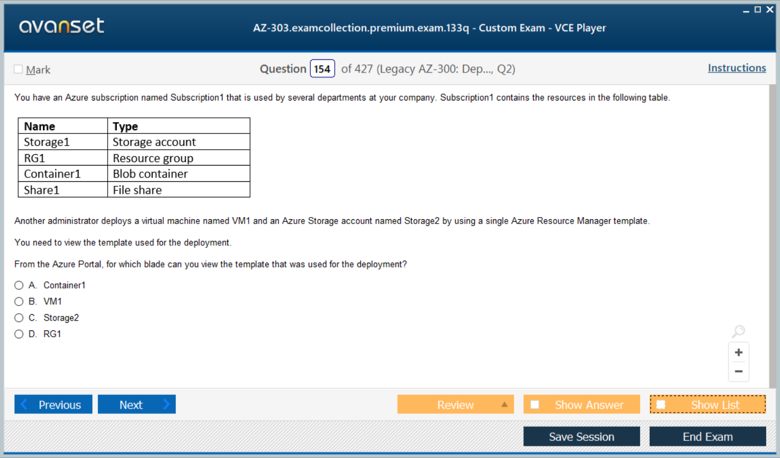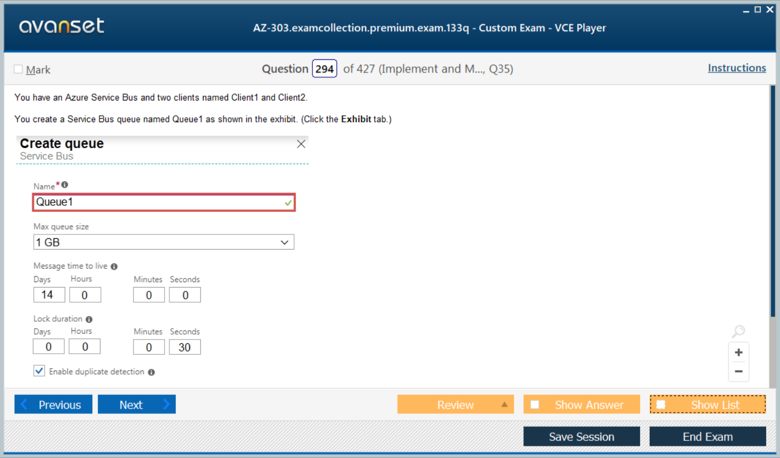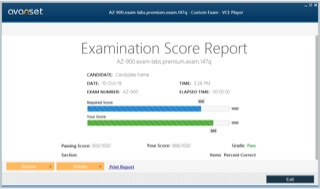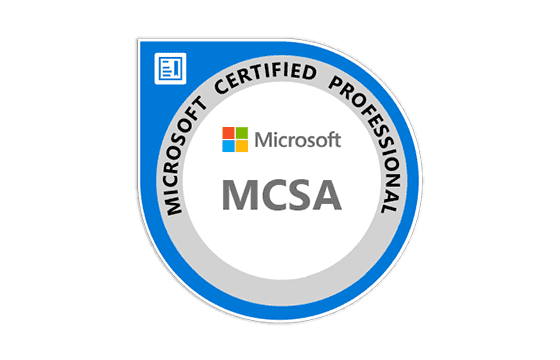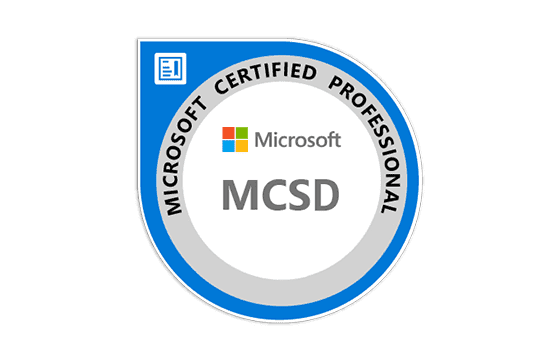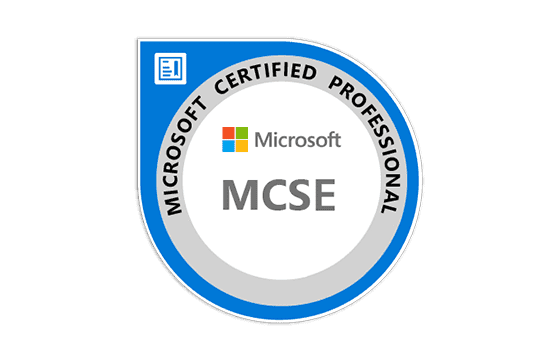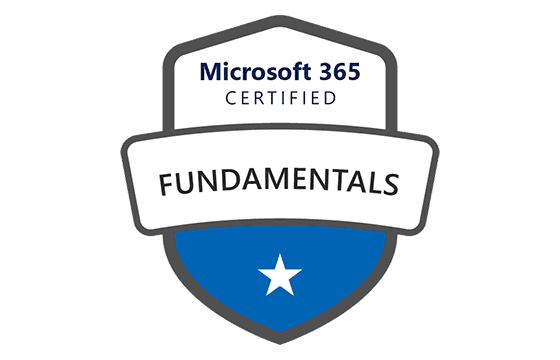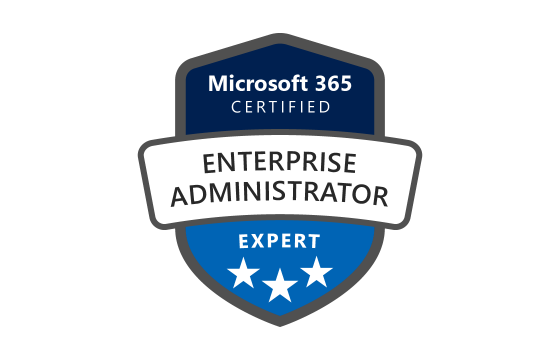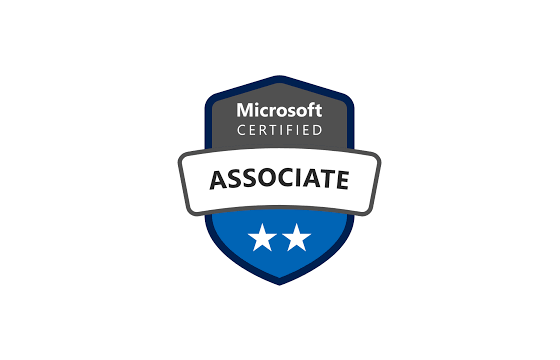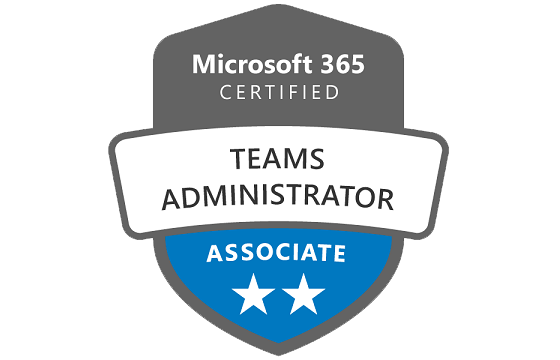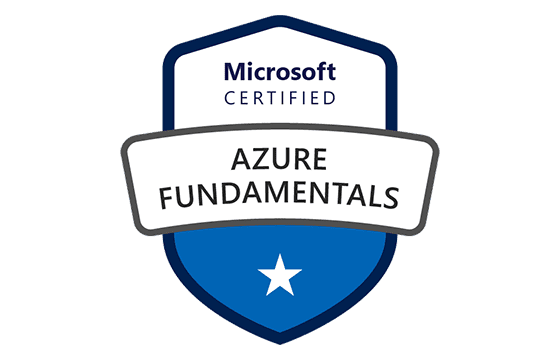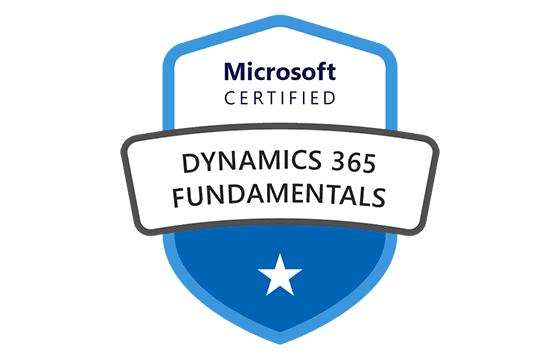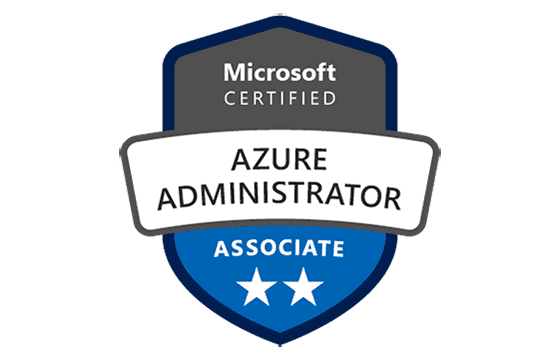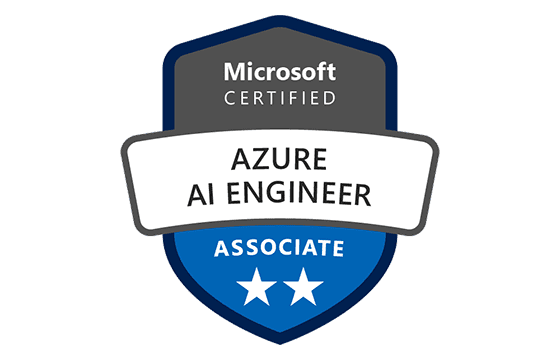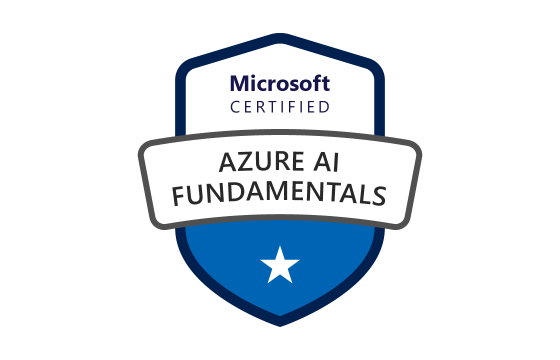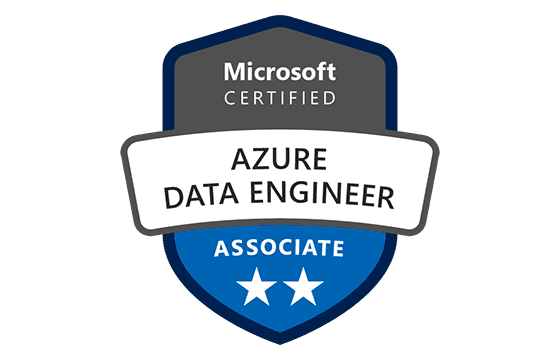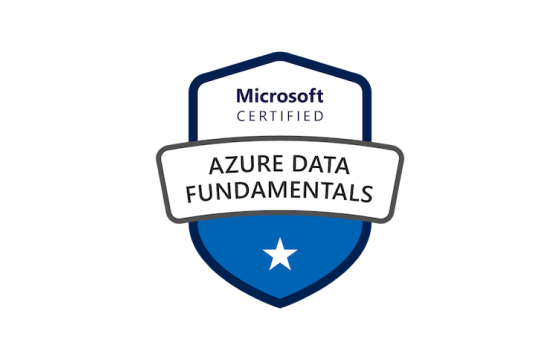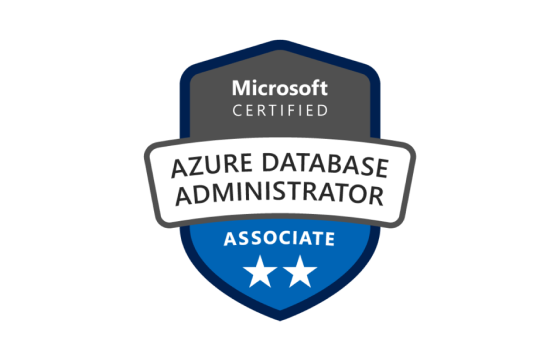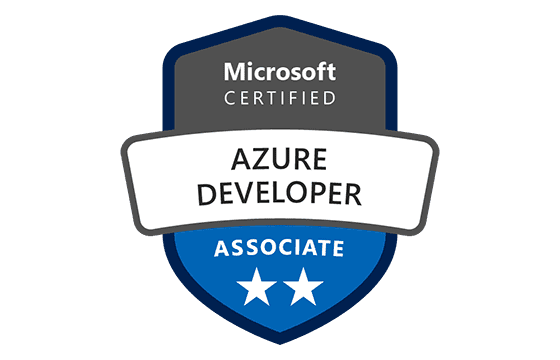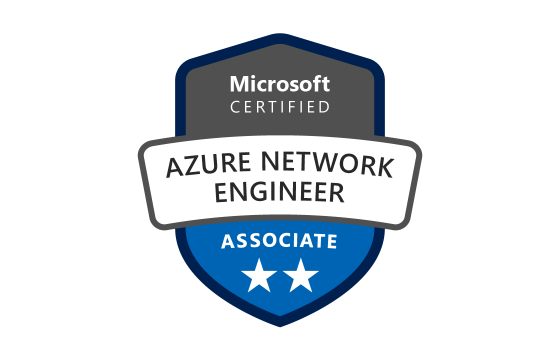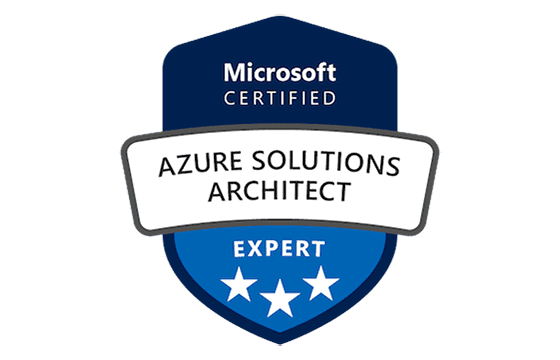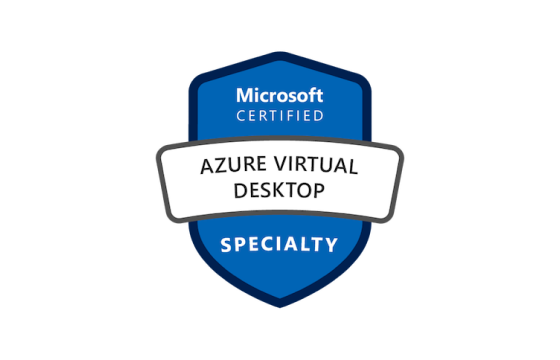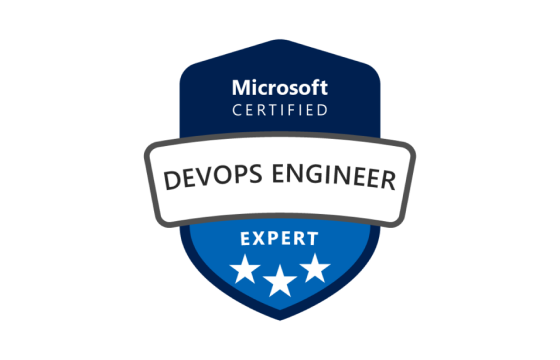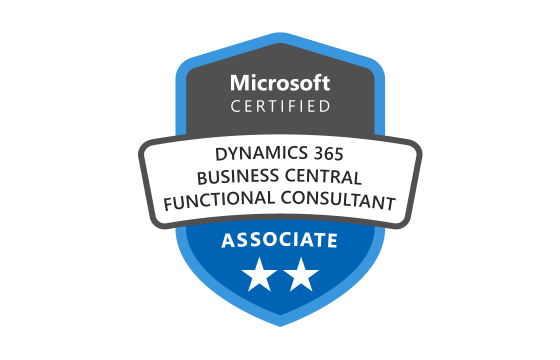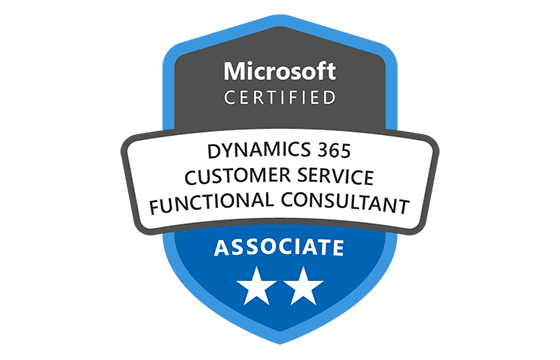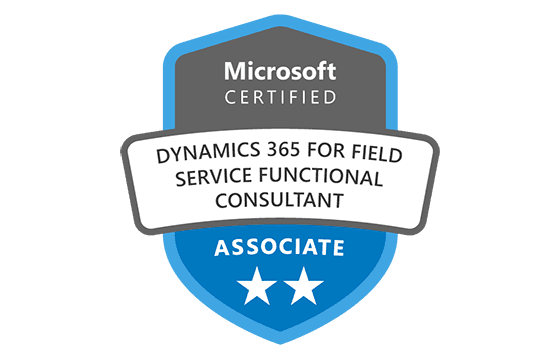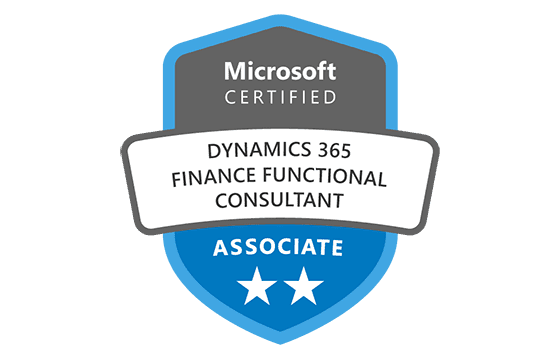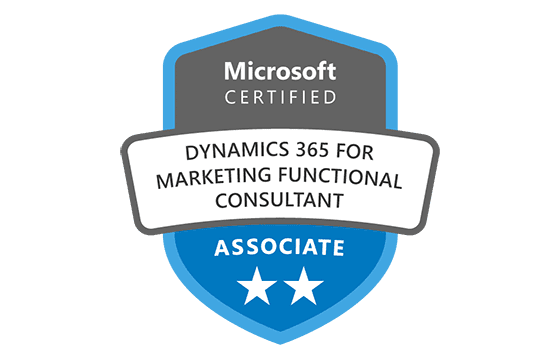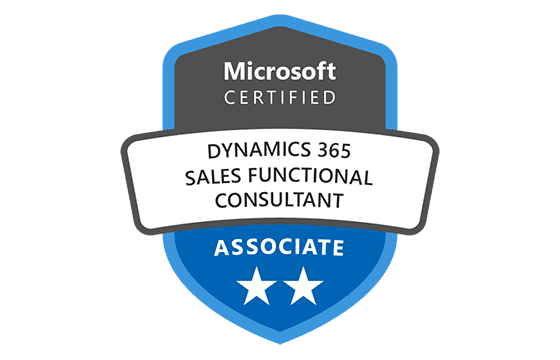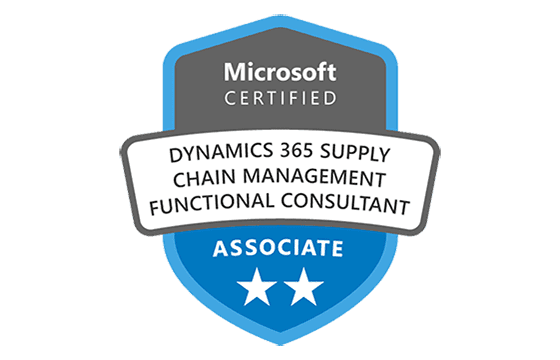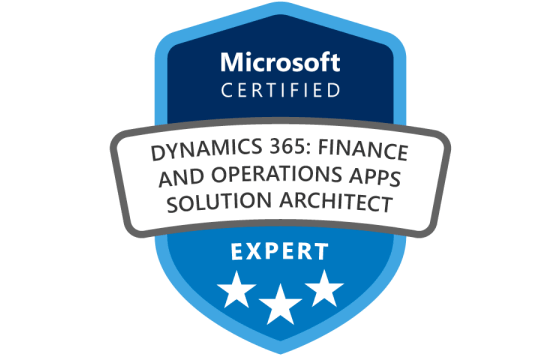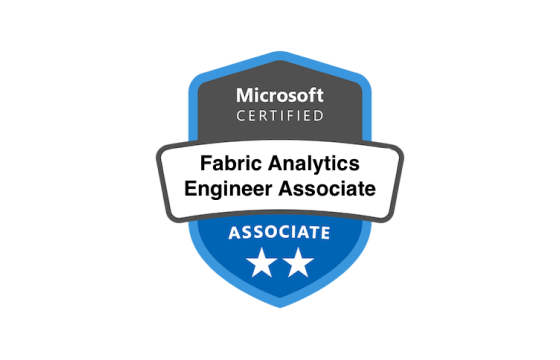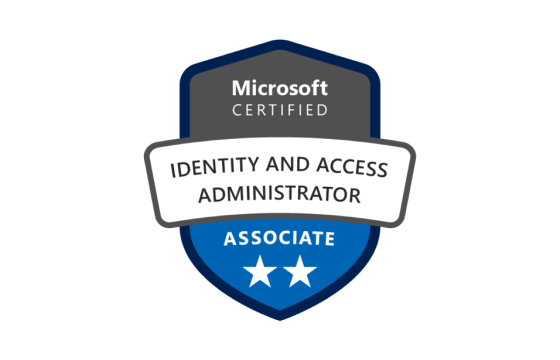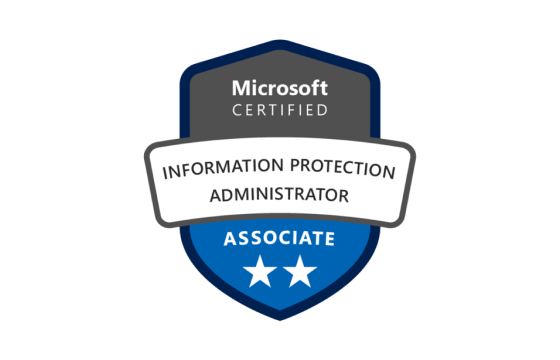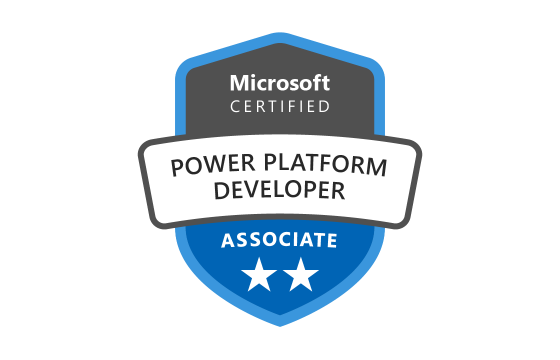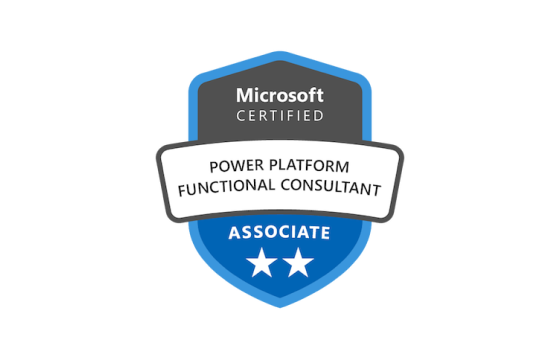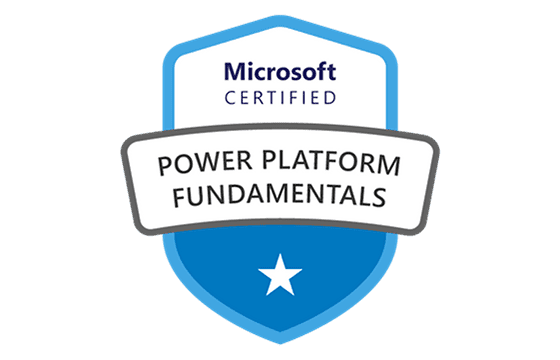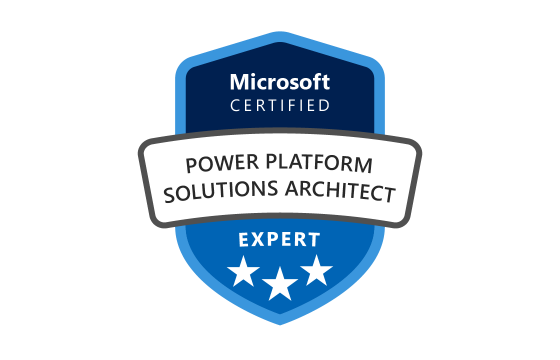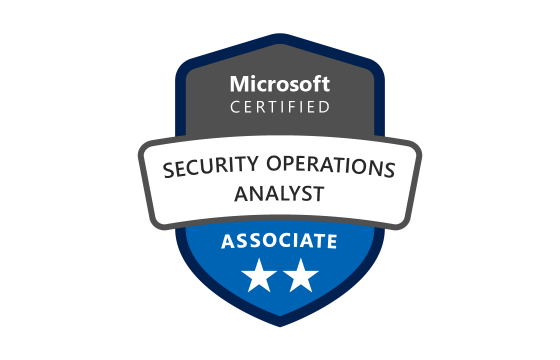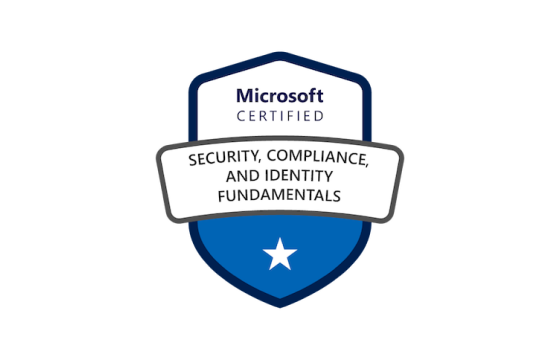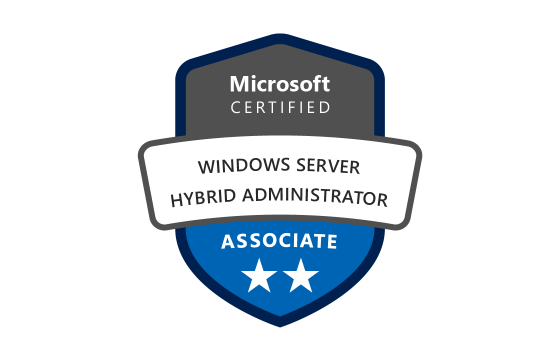Pass Your Microsoft Certified: Azure Solutions Architect Expert Certification Easy!
Microsoft Certified: Azure Solutions Architect Expert Certification Exams Questions & Answers, Accurate & Verified By IT Experts
Instant Download, Free Fast Updates, 99.6% Pass Rate.

$69.99
Microsoft Certified: Azure Solutions Architect Expert Certification Exams Screenshots
Download Free Microsoft Certified: Azure Solutions Architect Expert Practice Test Questions VCE Files
| Exam | Title | Files |
|---|---|---|
Exam AZ-303 |
Title Microsoft Azure Architect Technologies |
Files 7 |
Exam AZ-305 |
Title Designing Microsoft Azure Infrastructure Solutions |
Files 2 |
Microsoft Certified: Azure Solutions Architect Expert Certification Exam Dumps & Practice Test Questions
Prepare with top-notch Microsoft Certified: Azure Solutions Architect Expert certification practice test questions and answers, vce exam dumps, study guide, video training course from ExamCollection. All Microsoft Certified: Azure Solutions Architect Expert certification exam dumps & practice test questions and answers are uploaded by users who have passed the exam themselves and formatted them into vce file format.
Mastering Microsoft Azure Solutions Architect Expert: Complete Guide to Exam Prep, Real-World Architecture, and Career Growth
The role of a Microsoft Azure Solutions Architect is one of the most sought-after positions in the cloud computing domain. Professionals in this role are responsible for designing, implementing, and overseeing cloud solutions that meet an organization's technical requirements and business goals. An Azure Solutions Architect works closely with stakeholders, including business leaders, developers, and security teams, to ensure that solutions are scalable, reliable, and cost-effective.
Unlike general cloud administrators, a Solutions Architect is expected to have a comprehensive understanding of Azure services, architecture patterns, and cloud-native solutions. This includes expertise in compute, storage, networking, identity management, security, and business continuity. The ability to make decisions about the right tools, services, and configurations to use in different scenarios is a critical part of the role.
Core Skills Required
To excel as an Azure Solutions Architect, candidates must cultivate both technical and soft skills. Technical competencies include designing infrastructure for compute, storage, and networking, implementing identity and security solutions, and applying best practices for monitoring and optimization.
Soft skills are equally essential. Architects must communicate complex technical concepts clearly to non-technical stakeholders, lead cross-functional teams, and make strategic decisions that balance cost, performance, and security. Problem-solving, analytical thinking, and adaptability are key traits for anyone aiming to succeed in this role.
Exam Overview and Objectives
The Microsoft Azure Solutions Architect Expert certification is achieved by passing the AZ-305 exam, which focuses on designing Microsoft Azure infrastructure solutions. This exam tests candidates on their ability to design governance, identity, security, data, and business continuity strategies.
The exam measures competency in five key domains: designing identity and governance, implementing compute and storage solutions, designing business continuity strategies, designing data integration and management solutions, and optimizing networking and application architectures. Each domain requires a combination of theoretical knowledge and practical experience, making hands-on practice essential.
Understanding the weight of each domain helps in prioritizing study efforts. Candidates should focus on areas they are less familiar with while ensuring a well-rounded grasp of all domains. Microsoft provides an official exam guide and learning path, which are excellent starting points for organizing a study plan.
Preparing a Study Plan
A structured study plan is crucial for success. Begin by reviewing the official Microsoft learning modules for AZ-305. These modules offer detailed insights into each exam domain and provide interactive exercises to reinforce learning.
Next, map out a timeline that allocates dedicated hours to study each domain. It is beneficial to combine theory with hands-on labs. For example, while studying virtual networks, set up a lab environment to deploy and configure VNets, subnets, and network security groups. This practice reinforces concepts and builds confidence in applying them in real-world scenarios.
Tracking progress is another key aspect. Maintaining a checklist of topics covered, along with notes on areas that need further review, ensures no critical topic is overlooked. Periodically revisiting difficult subjects and attempting practice questions helps solidify understanding and improve recall under exam conditions.
Hands-On Experience
Hands-on experience is indispensable for mastering Azure solutions. Setting up a sandbox or using Azure’s free tier enables experimentation without impacting live environments. This practical exposure allows candidates to understand service interactions, configurations, and troubleshooting.
Common labs include deploying virtual machines, configuring storage accounts, setting up Azure Active Directory, designing load-balanced solutions, and implementing backup and recovery strategies. Working through these exercises helps internalize best practices and builds familiarity with Azure portal, PowerShell, and CLI commands.
Simulating real-world scenarios is especially useful. For instance, designing a multi-region application with high availability and disaster recovery not only prepares candidates for exam questions but also equips them with skills applicable in professional roles.
Designing Identity and Governance Solutions
Identity and governance form the backbone of secure and well-managed Azure environments. A Solutions Architect must understand how to implement Azure Active Directory, role-based access control, conditional access policies, and identity protection mechanisms.
Governance involves establishing policies, resource locks, and management groups to ensure compliance with organizational standards. Designing effective governance structures helps prevent misconfigurations, control costs, and enforce security requirements across subscriptions and resources.
Candidates should practice creating governance frameworks in lab environments, exploring scenarios such as managing multiple subscriptions, setting up resource tagging policies, and monitoring compliance with Azure Policy. This hands-on experience directly aligns with exam objectives and real-world responsibilities.
Implementing Compute and Storage Solutions
Compute and storage are core pillars of Azure infrastructure. Understanding the right combination of services is critical for performance, scalability, and cost optimization. Azure provides multiple compute options, including virtual machines, Azure App Service, Azure Kubernetes Service, and Azure Functions. Each service has specific use cases, advantages, and limitations.
Storage solutions also vary based on requirements. Candidates must be familiar with Blob Storage, Azure Files, Azure SQL Database, Cosmos DB, and other storage options. Key considerations include redundancy, performance tiers, access patterns, and security.
Practical labs should focus on deploying and configuring compute resources, designing scalable storage architectures, and integrating monitoring and backup solutions. Learning how to select the appropriate service based on workload requirements is a central skill tested in the exam.
Designing Networking and Security Solutions
Networking and security are essential to ensure application availability, data protection, and regulatory compliance. Solutions Architects must design secure and optimized network topologies using Azure Virtual Network, load balancers, Application Gateway, VPN gateways, and Azure Firewall.
Security design involves implementing firewalls, network security groups, encryption mechanisms, threat protection, and monitoring strategies. Candidates should understand the shared responsibility model and how to enforce security at multiple layers of the architecture.
Hands-on exercises can include creating virtual networks with subnets, configuring NSGs to restrict traffic, setting up application gateways for secure web traffic, and implementing Azure Key Vault for secure secret management. Practicing these scenarios reinforces the practical knowledge required for the exam and professional work.
Business Continuity and Disaster Recovery
High availability and disaster recovery are vital for resilient Azure solutions. Solutions Architects must design strategies that ensure applications and data remain accessible during outages or disasters.
Key components include availability zones, region pairs, Azure Backup, Azure Site Recovery, and geo-redundant storage. Understanding the trade-offs between cost, recovery time objectives, and recovery point objectives helps architects design balanced solutions.
Practical labs should simulate failures, test failover procedures, and validate backup and recovery strategies. These exercises provide real-world insights into designing resilient architectures, preparing candidates for scenario-based questions in the exam.
Data Integration and Management
Azure Solutions Architects need a strong grasp of data management and integration. This includes designing relational and non-relational databases, implementing data pipelines, and ensuring data security and compliance.
Candidates should explore Azure SQL Database, Cosmos DB, Data Factory, Synapse Analytics, and storage account integrations. Practical exercises might include configuring ETL processes, setting up secure data access, and optimizing data performance.
Understanding data lifecycle, retention policies, and compliance requirements is critical. This ensures solutions meet both technical performance and organizational governance standards.
Cost Optimization and Performance Tuning
Optimizing costs without compromising performance is a crucial skill for Solutions Architects. Candidates must understand pricing models, reserved instances, autoscaling, and cost management tools.
Hands-on practice includes monitoring resource usage, adjusting scaling policies, and applying cost-saving measures such as moving workloads to appropriate storage tiers or optimizing compute usage. Learning to evaluate trade-offs between cost, performance, and availability ensures architects can design financially viable solutions.
Performance tuning also involves monitoring and analyzing metrics, implementing caching strategies, and designing efficient network topologies. Real-world scenarios, such as handling high-traffic applications, help build practical expertise.
Leveraging Microsoft Learn and Community Resources
Microsoft Learn provides comprehensive, structured learning paths aligned with the exam objectives. These modules combine documentation, interactive exercises, and knowledge checks to reinforce learning.
In addition to Microsoft Learn, community forums, blogs, and study groups offer insights into practical challenges and exam strategies. Engaging with the Azure community provides exposure to real-world scenarios, best practices, and updates on evolving services.
Participating in discussions, asking questions, and reviewing shared lab exercises enrich understanding and build confidence before attempting the exam.
Practice Exams and Knowledge Assessment
Taking practice exams is essential for gauging readiness. Mock tests simulate the exam environment, helping candidates become familiar with question formats, time management, and exam pressure.
After each practice test, reviewing explanations for incorrect answers is critical. This helps identify knowledge gaps and reinforces understanding of complex concepts. Repeated practice improves speed, accuracy, and confidence, which are key factors for success.
Maintaining a Growth Mindset
Finally, approaching exam preparation with a growth mindset enhances learning and retention. Accepting that mistakes and challenges are part of the learning process encourages continuous improvement.
Documenting lessons learned, revisiting difficult concepts, and experimenting in lab environments all contribute to deeper understanding. A solutions architect who embraces lifelong learning is better equipped to adapt to the evolving Azure ecosystem and emerging technologies.
Preparing for the Microsoft Azure Solutions Architect Expert exam requires a combination of structured study, hands-on practice, and strategic review. Understanding the role, mastering core skills, designing practical solutions, and leveraging available resources are all critical components of success.
By focusing on real-world application of Azure services, engaging with the community, and continuously assessing knowledge through practice exams, candidates can confidently approach the exam and advance their careers in cloud architecture. Achieving this certification demonstrates both technical proficiency and the ability to design scalable, secure, and cost-effective solutions in the Microsoft Azure ecosystem.
Advanced Azure Architecture Design Principles
Designing robust and scalable cloud solutions requires a deep understanding of architecture principles and patterns. As an Azure Solutions Architect, you must ensure that applications are secure, highly available, and optimized for performance and cost. Understanding common design principles such as scalability, resilience, performance efficiency, and security is crucial for both the exam and real-world implementations.
Scalability involves ensuring that applications can handle increasing workloads without performance degradation. This may include implementing auto-scaling for virtual machines or containerized workloads, partitioning data across multiple databases, or distributing traffic with load balancers.
Resilience focuses on maintaining service availability during failures. Using availability zones, geo-redundancy, and failover strategies helps minimize downtime. Designing for failure is a key mindset for architects, as it ensures that solutions remain operational under various conditions.
Performance efficiency requires monitoring and optimizing resource usage. This may involve caching frequently accessed data, using content delivery networks for global access, or selecting the right compute and storage tiers. Security is embedded at every layer, from network segmentation to identity and access management, encryption, and threat detection.
Hybrid and Multi-Cloud Architectures
Many organizations operate in hybrid or multi-cloud environments, combining on-premises infrastructure with Azure or leveraging multiple cloud providers. As a Solutions Architect, understanding how to integrate these environments is critical.
Hybrid cloud strategies often involve Azure Arc, Azure Stack, or VPN/ExpressRoute connections to extend on-premises resources to the cloud. Architects must plan for secure connectivity, identity federation, and consistent governance across environments.
Multi-cloud architectures may be adopted for redundancy, vendor flexibility, or specific service advantages. Designing applications to run seamlessly across multiple providers requires careful planning around networking, data synchronization, and centralized monitoring. Hands-on labs simulating hybrid or multi-cloud deployments help reinforce practical skills and exam readiness.
Designing Networking Topologies
Networking is foundational to all Azure architectures. Solutions Architects must design secure, scalable, and high-performing network topologies. This includes virtual networks, subnets, routing, and traffic management strategies.
Designing hub-and-spoke topologies is common for enterprise environments. The hub typically hosts shared services, while spokes contain isolated workloads. Implementing network security groups, firewalls, and application gateways ensures secure traffic flow.
Architects should also understand load balancing strategies, including Azure Load Balancer, Application Gateway, and Traffic Manager, to distribute traffic efficiently. Network monitoring tools such as Azure Monitor and Network Watcher allow architects to identify and resolve performance bottlenecks.
Implementing Advanced Security Measures
Security is a critical pillar of Azure architecture. Solutions Architects must implement multi-layered security strategies that protect data, applications, and infrastructure.
Identity and access management is central to security. Azure Active Directory enables role-based access control, conditional access, and identity protection. Implementing least-privilege access ensures that users and services have only the permissions they need.
Data encryption is another key consideration. Azure provides encryption at rest and in transit, as well as key management through Azure Key Vault. Threat detection tools like Azure Security Center and Microsoft Defender for Cloud help monitor and mitigate security risks.
Practical exercises should include configuring secure virtual networks, implementing role-based access policies, and testing threat detection scenarios. Understanding these security measures is essential for both the exam and professional deployments.
Designing Business Continuity and Disaster Recovery
High availability and disaster recovery planning are critical for enterprise-grade solutions. Architects must design systems that can withstand failures while meeting recovery time objectives (RTOs) and recovery point objectives (RPOs).
Strategies include using availability zones, geo-redundant storage, and Azure Site Recovery for workload replication and failover. Architects should also design backup strategies that meet compliance and regulatory requirements.
Testing failover scenarios in lab environments helps reinforce understanding. Candidates should practice simulating regional failures, recovering virtual machines, and restoring data to ensure continuity. These exercises build confidence in both exam and real-world scenarios.
Data Solutions and Integration
Modern applications often rely on diverse data sources and services. Architects must design solutions that efficiently store, process, and integrate data while ensuring security and compliance.
Azure provides a wide range of data services, including SQL Database, Cosmos DB, Azure Data Lake, Synapse Analytics, and Data Factory. Choosing the right data platform depends on workload requirements, scalability needs, and performance targets.
Data integration strategies include designing ETL pipelines, using event-driven architectures, and implementing messaging services like Azure Service Bus or Event Grid. Hands-on practice creating data pipelines, managing transformations, and securing sensitive data is essential for mastery.
Monitoring and Optimization
Once solutions are deployed, monitoring and optimization are ongoing responsibilities. Solutions Architects must design systems with observability in mind, collecting metrics, logs, and diagnostics to identify performance issues and opportunities for improvement.
Azure Monitor, Log Analytics, and Application Insights provide deep insights into system health and user experience. Architects should design alerting, automated remediation, and dashboards to support operational excellence.
Optimization also includes managing resource costs, adjusting compute and storage allocations, and evaluating the impact of new services or configurations. Continuous assessment ensures that solutions remain efficient, secure, and cost-effective.
Exam-Focused Preparation Strategies
To prepare effectively for the exam, candidates should adopt a combination of study techniques. Start by reviewing the official Microsoft exam objectives, breaking them down into manageable study segments.
Hands-on labs are essential. Setting up virtual machines, configuring networks, implementing security measures, and testing high-availability solutions builds confidence in applying concepts. Practice scenarios that combine multiple services and design principles to simulate real-world challenges.
Mock exams help candidates identify knowledge gaps and improve time management. Reviewing explanations for incorrect answers is critical for reinforcing understanding. Joining study groups or forums allows candidates to exchange insights and learn from peers’ experiences.
Real-World Scenario Practice
Exam questions often focus on scenario-based problem solving. Candidates must apply knowledge to design solutions that meet specific business and technical requirements.
Examples include designing a multi-region web application with high availability, integrating on-premises identity with Azure AD, or optimizing storage costs while maintaining performance. Practicing these scenarios in labs helps solidify understanding and develop problem-solving skills.
Documenting solutions, reasoning behind design choices, and potential trade-offs also enhances preparation. This exercise aligns with the mindset required for both the exam and professional architecture work.
Leveraging Learning Resources
Microsoft Learn remains the most comprehensive source of study materials. Its structured learning paths guide candidates through exam objectives, combining documentation, interactive exercises, and assessments.
Additional resources include official Microsoft documentation, community blogs, technical forums, video tutorials, and study guides. Engaging with multiple resources provides diverse perspectives and reinforces understanding of complex concepts.
Tracking progress with checklists, notes, and practice exercises ensures thorough coverage of all exam domains. Regularly revisiting challenging topics helps strengthen weak areas and build confidence.
Maintaining Practical Skills
Certification alone is not enough to remain effective in the Solutions Architect role. Continuous practice and hands-on experience are essential. Working on projects, either professionally or through lab simulations, keeps skills sharp and aligned with evolving Azure services.
Experimenting with new services, testing different configurations, and exploring advanced features ensures readiness for future challenges. Architects who continuously learn are better equipped to design innovative and effective cloud solutions.
Advanced design principles, hybrid cloud strategies, security, data integration, monitoring, and optimization form the foundation of a successful Azure Solutions Architect. Preparing for the certification exam requires mastering these areas, gaining practical experience, and applying knowledge to real-world scenarios.
By focusing on hands-on labs, scenario-based practice, and continuous learning, candidates can confidently approach the exam and advance their careers as expert Azure architects. Achieving certification demonstrates the ability to design secure, scalable, and cost-effective solutions, positioning professionals as valuable contributors to cloud-driven organizations.
Mastering Exam Strategies for Azure Solutions Architect Certification
Successfully passing the Microsoft Azure Solutions Architect Expert exam requires more than technical knowledge. It demands strategic preparation, effective time management, and the ability to approach scenario-based questions with clarity. Developing a structured exam strategy ensures candidates can confidently tackle each question and maximize their scoring potential.
The exam tests not only knowledge of Azure services but also the ability to apply best practices and design principles to real-world scenarios. Questions often simulate enterprise-level challenges, requiring candidates to evaluate multiple solutions and select the most effective option based on performance, security, cost, and compliance.
Understanding Exam Formats and Question Types
The AZ-305 exam uses a combination of multiple-choice, multiple-answer, drag-and-drop, case study, and scenario-based questions. Familiarity with these formats is crucial to avoid confusion during the exam.
Scenario-based questions are particularly important as they simulate real-life design challenges. Candidates must analyze requirements, identify constraints, and propose solutions that balance functionality, cost, and security. Practicing these types of questions enhances problem-solving skills and ensures readiness for the exam environment.
Time Management and Test-Taking Techniques
Time management is essential during the exam. Candidates should allocate their time based on question complexity and domain weighting. Spending too much time on a single question can negatively impact overall performance.
A common strategy is to quickly answer questions with clear, obvious solutions and mark more complex scenarios for review. Using the process of elimination helps narrow down options and increases the likelihood of selecting the correct answer. Regular practice with timed mock exams improves speed and confidence.
Leveraging Practice Exams
Practice exams are invaluable for identifying strengths and weaknesses. They simulate the actual test environment and expose candidates to question types and difficulty levels similar to the real exam.
After completing a practice exam, candidates should review each incorrect answer carefully. Understanding why an answer is wrong, along with the rationale for the correct choice, reinforces learning and prevents repeated mistakes. Incorporating multiple practice tests into a study schedule ensures comprehensive preparation and highlights areas needing additional focus.
Scenario-Based Preparation
Scenario-based questions are often the most challenging aspect of the exam. Candidates must demonstrate the ability to design Azure solutions that meet complex requirements, including performance, scalability, security, and cost considerations.
Practicing with lab scenarios is essential. For example, designing a high-availability web application spanning multiple regions, integrating on-premises data with Azure, or creating a disaster recovery plan for critical workloads helps simulate exam conditions. Documenting these solutions, along with reasoning for design choices, reinforces conceptual understanding and improves problem-solving skills.
Common Exam Domains
The exam evaluates five primary domains:
Design Identity and Governance: Includes implementing Azure Active Directory, role-based access, conditional access, and governance policies.
Design Compute and Storage Solutions: Focuses on choosing the right compute resources, storage solutions, and designing scalable, secure, and cost-effective architectures.
Design Networking: Involves virtual networks, load balancers, traffic management, VPNs, and network security strategies.
Design Business Continuity: Includes high availability, disaster recovery, backup strategies, and compliance considerations.
Design Data Integration: Covers relational and non-relational databases, data pipelines, event-driven architectures, and data governance.
Understanding the objectives and weighting of each domain helps prioritize study efforts and ensures comprehensive coverage of exam topics.
Effective Use of Microsoft Learn
Microsoft Learn offers structured modules specifically aligned with exam objectives. Completing these learning paths ensures coverage of all topics while reinforcing concepts with interactive exercises.
The platform also includes knowledge checks and assessments, allowing candidates to measure progress and identify areas for improvement. Combining Microsoft Learn with practical labs provides a strong foundation for exam readiness.
Hands-On Lab Practice
Lab practice is critical for mastering Azure solutions. Hands-on experience allows candidates to understand the nuances of configuration, deployment, and troubleshooting in real-world environments.
Key lab exercises include deploying virtual machines, configuring storage accounts, implementing network security groups, setting up Azure Active Directory, and creating disaster recovery plans. Simulating complex enterprise scenarios helps candidates develop the confidence to tackle scenario-based exam questions effectively.
Real-World Implementation Tips
Beyond exam preparation, focusing on real-world applicability enhances understanding. Architects must consider not just technical feasibility, but also operational efficiency, cost optimization, and security compliance.
Practicing solution designs that integrate multiple services, incorporate monitoring and alerts, and follow best practices prepares candidates for both the exam and professional responsibilities. Understanding the implications of each design choice on cost, performance, and security is a critical skill tested during the exam.
Cost Management and Optimization Strategies
Cost management is a recurring theme in both exam questions and real-world deployments. Solutions Architects must be able to evaluate pricing models, implement cost-saving measures, and balance performance with financial efficiency.
Key strategies include selecting the appropriate compute tiers, using reserved instances, leveraging auto-scaling, and optimizing storage performance. Hands-on labs should include monitoring cost metrics, analyzing resource utilization, and applying adjustments to meet budgetary constraints.
Security and Compliance Considerations
Security is embedded in every Azure solution. Architects must implement role-based access, encryption, network security, and threat detection measures to safeguard data and applications.
Compliance requirements vary across industries, requiring architects to understand regulatory obligations and design solutions that meet legal standards. Lab exercises simulating compliance audits, encryption configuration, and access management help reinforce practical skills.
Monitoring and Performance Tuning
Monitoring and performance tuning are essential for maintaining operational efficiency. Solutions Architects must design systems that provide visibility into resource usage, application performance, and security events.
Azure Monitor, Log Analytics, and Application Insights are critical tools for collecting metrics, logs, and telemetry data. Architects should design alerting and automated remediation processes to maintain system health and optimize performance.
Practical exercises should include setting up dashboards, configuring alerts, and analyzing logs to identify performance bottlenecks or security threats. These skills directly apply to scenario-based exam questions.
Community Engagement and Peer Learning
Engaging with the Azure community enhances exam preparation. Forums, study groups, and social media platforms provide insights into exam trends, practical challenges, and emerging best practices.
Discussing complex scenarios with peers, reviewing shared lab exercises, and participating in webinars exposes candidates to diverse perspectives and practical solutions. This collaborative learning approach reinforces understanding and builds confidence.
Continuous Knowledge Assessment
Regularly assessing knowledge ensures readiness for the exam. In addition to practice exams, candidates should track progress using checklists, notes, and summaries of key concepts.
Revisiting difficult topics, documenting solution designs, and simulating complex scenarios ensures thorough understanding and builds problem-solving skills. Continuous assessment identifies gaps, allowing candidates to focus on areas needing additional study before exam day.
Maintaining a Growth Mindset
Approaching exam preparation with a growth mindset is essential. Mistakes are opportunities to learn, and challenges strengthen problem-solving skills.
Documenting lessons learned, revisiting challenging concepts, and experimenting in lab environments cultivate resilience and adaptability. Architects who embrace continuous learning are better equipped to design innovative, secure, and cost-effective solutions in evolving cloud environments.
Mastering exam strategies, scenario-based problem solving, hands-on labs, and practical implementation skills is key to passing the Azure Solutions Architect Expert certification. Effective time management, practice exams, and continuous knowledge assessment ensure comprehensive preparation.
Engaging with the Azure community, leveraging Microsoft Learn, and focusing on real-world applicability not only improves exam performance but also equips candidates for professional success. By combining strategic preparation with technical expertise, candidates can confidently tackle the exam and establish themselves as skilled Azure Solutions Architects.
Real-World Case Studies for Azure Solutions Architecture
Understanding real-world scenarios is critical for bridging the gap between theoretical knowledge and practical application. Solutions Architects frequently encounter complex business requirements that demand innovative and efficient cloud solutions. Examining case studies helps candidates learn how to approach diverse challenges and apply Azure services effectively.
One common scenario involves designing a multi-region web application that needs high availability and low latency. Architects must choose the right combination of load balancers, availability zones, content delivery networks, and database replication strategies. Evaluating trade-offs between performance, cost, and resilience is key to developing an optimal solution.
Another scenario focuses on migrating an on-premises enterprise application to Azure. This requires planning for data migration, network connectivity, identity integration, and compliance considerations. Assessing dependencies, security requirements, and performance expectations ensures a smooth migration process.
Advanced Deployment Patterns
Deploying Azure solutions at scale requires familiarity with advanced deployment patterns. Solutions Architects should understand patterns such as hub-and-spoke networking, microservices architecture, event-driven systems, and hybrid cloud integrations.
The hub-and-spoke model allows centralization of shared services while maintaining isolated workloads. Microservices architecture facilitates modular application design, enabling independent development, deployment, and scaling of components. Event-driven patterns, using services like Azure Event Grid and Service Bus, allow responsive and decoupled communication between applications.
Hands-on practice deploying these patterns helps reinforce conceptual understanding. Candidates can simulate enterprise environments, configure networking topologies, and integrate multiple services to experience real-world complexities.
Hybrid Cloud Strategies
Many organizations operate hybrid cloud environments, combining on-premises infrastructure with Azure. Solutions Architects must design solutions that seamlessly integrate these environments while ensuring security, performance, and governance.
Hybrid strategies often involve Azure Arc or Azure Stack, extending Azure services to on-premises data centers. Architects must plan for identity integration, secure connectivity, centralized monitoring, and consistent policy enforcement. Hands-on labs simulating hybrid deployments help candidates understand the intricacies of managing workloads across multiple environments.
Understanding latency, bandwidth, and failover considerations is essential for hybrid cloud solutions. Candidates should practice designing architectures that maintain high availability, optimize resource usage, and support seamless data synchronization between on-premises and cloud systems.
Multi-Cloud Considerations
Some organizations leverage multiple cloud providers to increase redundancy, avoid vendor lock-in, or access specialized services. Solutions Architects must understand multi-cloud design principles, including data replication, networking, identity federation, and monitoring across providers.
Designing multi-cloud architectures requires careful planning to ensure security, performance, and compliance. Architects must consider cross-cloud communication, centralized logging, and cost management strategies. Practical exercises simulating multi-cloud deployments help candidates anticipate challenges and implement effective solutions.
Security Architecture in Practice
Real-world solutions demand robust security measures across identity, networking, data, and applications. Azure provides a comprehensive set of tools, but architects must design systems that integrate these tools effectively.
Identity management involves configuring Azure Active Directory, implementing role-based access control, and enabling conditional access policies. Network security requires segmentation, firewalls, load balancers, and threat detection. Data security includes encryption, key management, and compliance with regulatory requirements.
Candidates should practice configuring these controls in lab environments, applying policies, and testing scenarios for potential vulnerabilities. Hands-on experience ensures understanding of both best practices and practical application.
Monitoring, Logging, and Diagnostics
Monitoring is critical for maintaining system health and performance. Solutions Architects must design architectures that provide visibility into applications, networks, and infrastructure.
Azure Monitor, Log Analytics, and Application Insights allow for real-time monitoring and diagnostics. Architects should design dashboards, alerts, and automated remediation procedures to quickly address performance issues or security threats.
Practical labs might include setting up performance alerts for virtual machines, monitoring database throughput, or tracking application response times. Understanding how to interpret metrics and logs is essential for both exam scenarios and professional practice.
Cost Management in Enterprise Deployments
Cost optimization is a crucial aspect of architecture design. Architects must select services and configurations that meet performance requirements while minimizing expenses.
Strategies include choosing appropriate VM sizes, leveraging reserved instances, auto-scaling workloads, optimizing storage tiers, and monitoring usage metrics. Practical exercises might involve analyzing resource consumption, projecting costs, and applying optimization techniques to reduce expenditure without compromising functionality.
Understanding cost implications of design decisions is essential for exams and enterprise environments. Candidates should practice balancing performance, reliability, and expense in multiple scenario-based labs.
Disaster Recovery and High Availability
Enterprise solutions must maintain continuity during outages or disasters. Architects need to design systems that meet recovery time objectives (RTO) and recovery point objectives (RPO) while minimizing downtime.
Strategies include geo-redundant storage, multi-region deployments, Azure Site Recovery, and automated failover mechanisms. Simulating failure scenarios in labs provides hands-on experience with backup restoration, failover processes, and high-availability configurations.
Documenting design choices, testing strategies, and understanding trade-offs ensures architects are prepared for both exams and real-world deployments.
Advanced Data Solutions
Modern applications depend heavily on efficient data management and integration. Architects should design solutions that combine relational, non-relational, and big data services to meet diverse requirements.
Azure SQL Database, Cosmos DB, Data Lake, Synapse Analytics, and Data Factory provide a wide range of options for storage, processing, and analytics. Candidates should practice configuring data pipelines, securing sensitive information, and implementing event-driven processing using messaging services like Event Grid or Service Bus.
Designing data solutions also involves considering scalability, performance, and cost. Practical exercises with multi-service integration reinforce knowledge and prepare candidates for scenario-based exam questions.
Automation and Infrastructure as Code
Automation is a key skill for Azure Solutions Architects. Using Infrastructure as Code (IaC) ensures consistent, repeatable deployments and reduces human error.
Azure Resource Manager templates, Bicep, and Terraform allow architects to define infrastructure declaratively. Candidates should practice deploying resources using IaC, managing configuration changes, and testing rollback procedures.
Automation also applies to monitoring, security, and operational tasks. Designing solutions that incorporate automation improves efficiency, reduces operational overhead, and prepares candidates for real-world enterprise environments.
Exam Preparation Through Real-World Simulations
Combining case studies, advanced deployment patterns, and hands-on labs creates realistic exam preparation scenarios. Candidates should document design decisions, evaluate trade-offs, and practice explaining their choices.
Simulating enterprise-level challenges, including networking, security, disaster recovery, data integration, and cost optimization, prepares candidates for the scenario-based format of the exam. This approach also builds skills directly transferable to professional roles.
Continuous Learning and Skill Enhancement
Azure is a rapidly evolving platform. Staying current with new services, best practices, and architecture patterns is essential. Solutions Architects should regularly explore updates, participate in community discussions, and experiment with emerging services.
Continuous learning ensures architects remain effective in designing secure, scalable, and optimized cloud solutions. Practical experience, combined with ongoing study, strengthens both exam readiness and career growth.
Real-world case studies, advanced deployment patterns, hybrid and multi-cloud strategies, security, monitoring, cost management, and automation are essential components of mastering Azure solutions architecture. Preparing for the exam using practical simulations, lab exercises, and scenario-based practice bridges the gap between theoretical knowledge and professional expertise.
By applying these principles, candidates not only excel in the Microsoft Azure Solutions Architect Expert exam but also gain the skills required to design and implement complex, enterprise-level cloud solutions. Continuous learning, practical experience, and strategic preparation are the keys to long-term success in this dynamic field.
Career Benefits of Becoming an Azure Solutions Architect
Earning the Microsoft Azure Solutions Architect Expert certification opens the door to numerous career opportunities. Organizations increasingly rely on cloud technology to drive digital transformation, and certified architects are in high demand to design, implement, and manage complex cloud environments.
Professionals with this certification can pursue roles such as Cloud Solutions Architect, Enterprise Architect, Cloud Consultant, or Cloud Infrastructure Lead. These roles often involve strategic planning, leading technical teams, and designing enterprise-grade solutions that align with business objectives.
Certification validates technical skills, enhances credibility, and demonstrates the ability to handle real-world challenges. Many organizations prioritize hiring certified professionals, and this can result in higher salaries, leadership opportunities, and greater career mobility.
Industry Relevance and Market Demand
Cloud adoption continues to grow across industries, from finance and healthcare to retail and government. Microsoft Azure is one of the leading cloud platforms, and expertise in its architecture and services is highly valued.
The demand for Azure Solutions Architects is driven by organizations’ need to modernize IT infrastructure, implement hybrid solutions, optimize costs, and ensure security and compliance. Professionals who can design scalable, resilient, and cost-effective cloud solutions are critical to achieving these objectives.
Industry reports consistently show strong salary potential for certified cloud architects, making the Azure Solutions Architect Expert credential a strategic investment in career growth.
Continuous Learning and Skill Enhancement
Azure is a rapidly evolving platform, with new services, features, and best practices released frequently. Maintaining expertise requires continuous learning and hands-on experience.
Certified architects should stay updated on emerging technologies, including artificial intelligence, machine learning, hybrid cloud solutions, serverless computing, and advanced security strategies. Engaging with Microsoft Learn, technical blogs, community forums, webinars, and hands-on labs ensures skills remain current and relevant.
Learning beyond the exam objectives, such as exploring containerization, Kubernetes orchestration, and DevOps practices, enhances professional versatility and prepares architects for diverse enterprise scenarios.
Building a Professional Portfolio
Developing a portfolio of real-world projects demonstrates practical skills and reinforces exam knowledge. This can include designing multi-region applications, implementing disaster recovery strategies, optimizing cost and performance, and integrating hybrid or multi-cloud solutions.
Documenting design decisions, architectural diagrams, and project outcomes showcases the ability to apply theoretical knowledge in practical scenarios. A strong portfolio can differentiate professionals in competitive job markets and attract opportunities for leadership or consulting roles.
Networking and Community Engagement
Networking with peers and engaging in the Azure community provides both learning and career opportunities. Participating in forums, attending conferences, joining user groups, and contributing to technical discussions enhances visibility and credibility.
Sharing insights, solving real-world challenges, and collaborating on projects allows professionals to gain diverse perspectives and learn best practices. Active community engagement also helps identify industry trends, emerging tools, and innovative solutions.
Leveraging Certification for Career Advancement
Certification can accelerate career advancement by demonstrating commitment to professional growth and technical proficiency. Certified architects are often entrusted with high-impact projects, strategic planning, and leadership responsibilities.
Employers recognize the value of certification in ensuring architects can design solutions that align with organizational goals, optimize resources, and maintain security and compliance. This recognition can lead to promotions, higher salaries, and expanded responsibilities.
Real-World Application of Azure Solutions Architecture
The principles learned through exam preparation extend beyond certification. In practice, Solutions Architects design solutions that meet evolving business needs, integrate emerging technologies, and address operational challenges.
Examples include migrating legacy systems to Azure, designing high-availability web applications, implementing data analytics pipelines, and deploying secure, compliant cloud infrastructures. Hands-on experience reinforces knowledge and builds confidence in applying design patterns, governance, security, and cost optimization strategies.
Advanced Tools and Automation
Architects increasingly leverage automation and Infrastructure as Code (IaC) to improve efficiency, consistency, and scalability. Tools like Azure Resource Manager templates, Bicep, and Terraform enable repeatable deployments and reduce human error.
Automation also extends to monitoring, alerting, and operational tasks. Solutions Architects design processes that streamline management, improve reliability, and allow teams to focus on strategic initiatives rather than routine maintenance.
Preparing for Future Challenges
Cloud architecture continues to evolve, driven by innovations in AI, IoT, edge computing, and hybrid environments. Solutions Architects must anticipate emerging trends and design solutions that are adaptable, secure, and scalable.
Continuous experimentation, learning, and engagement with new technologies ensures architects remain effective in designing modern cloud infrastructures. Preparing for future challenges also strengthens problem-solving skills and strategic thinking, essential qualities for career growth.
Work-Life Balance and Professional Satisfaction
Solutions Architects often enjoy a high degree of professional satisfaction due to the strategic and impactful nature of their work. Designing solutions that drive business outcomes, improve operational efficiency, and enhance security provides a sense of accomplishment.
Moreover, many organizations offer flexible work arrangements, remote opportunities, and collaborative environments for cloud professionals. Certification enhances eligibility for such roles and allows architects to pursue work that aligns with personal and professional goals.
Conclusion
Becoming a Microsoft Azure Solutions Architect Expert is a transformative career move. Certification validates technical expertise, enhances credibility, and positions professionals for leadership opportunities in cloud architecture.
The demand for skilled architects continues to grow as organizations embrace digital transformation, hybrid and multi-cloud solutions, and advanced technologies. Continuous learning, hands-on practice, community engagement, and real-world experience ensure professionals remain competitive and effective in designing secure, scalable, and cost-efficient solutions.
By strategically preparing for the exam, applying knowledge to practical scenarios, and committing to ongoing skill development, candidates can achieve both certification success and long-term career growth. The Azure Solutions Architect Expert certification is more than a credential; it is a gateway to impactful work, professional recognition, and advancement in the dynamic world of cloud computing.
ExamCollection provides the complete prep materials in vce files format which include Microsoft Certified: Azure Solutions Architect Expert certification exam dumps, practice test questions and answers, video training course and study guide which help the exam candidates to pass the exams quickly. Fast updates to Microsoft Certified: Azure Solutions Architect Expert certification exam dumps, practice test questions and accurate answers vce verified by industry experts are taken from the latest pool of questions.
Microsoft Microsoft Certified: Azure Solutions Architect Expert Video Courses


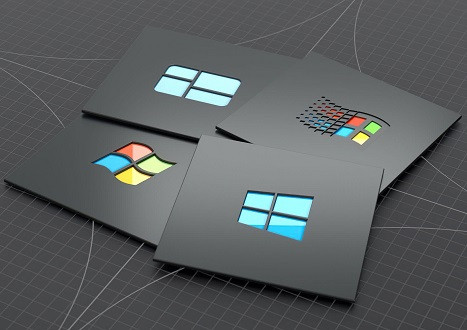



Top Microsoft Certification Exams
- AZ-104
- DP-700
- AZ-305
- AI-900
- AI-102
- AZ-900
- MD-102
- PL-300
- AZ-500
- SC-200
- MS-102
- SC-300
- SC-401
- AZ-700
- AZ-204
- DP-600
- SC-100
- MS-900
- AZ-400
- PL-200
- SC-900
- AZ-800
- AZ-140
- PL-600
- AZ-801
- PL-400
- MS-700
- DP-300
- PL-900
- MB-280
- DP-900
- DP-100
- GH-300
- MB-800
- MB-330
- MB-310
- MB-920
- MB-820
- MB-230
- MB-910
- MS-721
- MB-700
- PL-500
- GH-900
- MB-335
- GH-200
- MB-240
- MB-500
- DP-420
- AZ-120
- GH-100
- GH-500
- DP-203
- SC-400
- MB-900
- 98-383
- MO-201
- AZ-303
- 98-388
Site Search:


